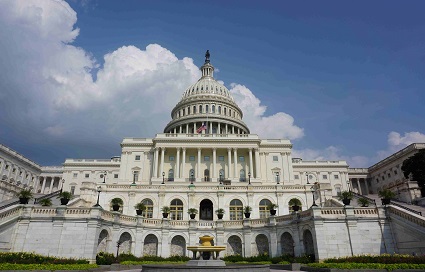Goals
- Build on past and current department initiatives to leverage and advance WisDOT’s efforts to actively respond to the rapid evolution of CAV and related technological advances.
- Develop a coordinated and comprehensive response to CAV technology, focused on the integration of this and other emerging technologies into department operations, policy, planning, multi-modal transit, and project development, as well as across the state, to continue to provide a safe and efficient transportation system.
- Leverage CAV technologies to provide new opportunities and more equitable access to Wisconsin’s transportation system for non-driving populations.
Objective Areas
-
Statute, Policy, and Regulation – Define policies that direct/guide legislative recommendations to responsibly accommodate/integrate emerging CAV technology to meet the department’s mission, vision and values.
-
Communications and Outreach – Develop and implement a communication strategy designed to educate and inform all stakeholders including government (local, state, federal, Tribal Nations), industry, legislative, and the general public about the Department’s goals pertaining to CAV, as well as to address questions and concerns regarding the anticipated integration of CAV technology.
-
Partnerships – Build and maintain partnerships to ensure the department is aware of and responsive to opportunities to collaborate at the local, regional, and national levels; engage with academia and industry to explore technology testing and pilot options within the state; and support stakeholder efforts in CAV integration that align with WisDOT’s goals and objectives.
-
Organizational Alignment, Coordination, and Readiness – Establish a coordinated department-level focus on CAV that leverages and builds upon existing agency efforts and provides a framework for agency divisions to adapt and respond to emerging CAV technologies, while safely maintaining, developing, and operating the state transportation system.
-
Develop Transportation System Infrastructure and Operations Readiness – Build upon current department efforts to leverage available and emerging technology to support the safe and efficient operation of the transportation system.
-
Research, Testing, and Pilot Projects – Continue and expand department collaboration and exploration of national, regional, state, academic, and private research opportunities and partnerships to promote value-added research to assist and guide deployment.
-
Data Governance and Security – Build upon and expand existing department efforts to collect, manage, analyze, and disseminate related CAV data that includes establishing security protocols to protect and support agency and statewide needs. Research new opportunities for Connected Vehicle data streams use in improving operations or design.<
-
Law Enforcement and First Responder Services– Understand and make available clear expectations for law enforcement and first responders when encountering CAVs on Wisconsin's roadways. Offer technical information and educational resources to local law enforcement and first responders.
Federal and State Regulatory Roles
Many entities have a role in the safe development of connected and automated vehicles. The state and federal governments’ primary roles general are divided by driver and vehicle management
 |  |
States’ responsibilities |
National Highway Transportation Safety Administration (NHTSA)’s responsibilities |
- Licensing human drivers and registering motor vehicles in their jurisdictions
- Enacting and enforcing traffic laws and regulations
- Conducting safety inspections, where States choose to do so
- Regulating motor vehicle insurance and liability
| - Setting Federal Motor Vehicle Safety Standards (FMVSSs) for new motor vehicles and motor vehicle equipment(with which manufacturers must certify compliance before they sell their vehicles)
- Enforcing compliance with FMVSSs
- Investigating and managing the recall and remedy of non-compliances and safety-related motor vehicle defects nationwide
- Communicating with and educating the public about motor vehicle safety issues
Photo source: unsplach.com
|